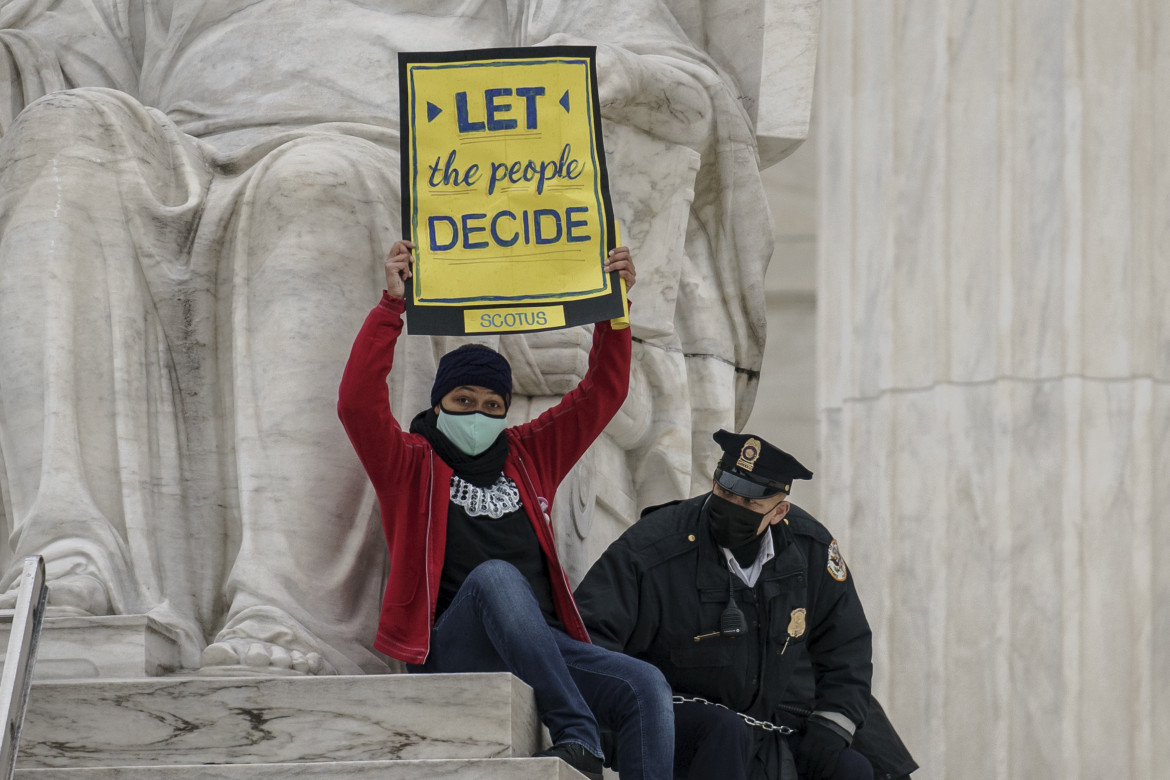Commentary
Barrett's appointment puts the US Supreme Court in the hands of the ultra-right
To call Barrett “conservative” is an understatement. Her selection promises to destabilize the court, perhaps for several generations.

Last week, the U.S. Supreme Court kept in force a ruling that allowed extending the date to receive valid ballots in Pennsylvania for several days. The Republican Party, which has an interest in limiting voting by mail as much as possible, had appealed, but the Supreme Court, divided at 4-4, did not have the majority necessary to invalidate the ruling.
It was only one of many lawsuits filed around the election and the maze of state and local rules that could affect the outcome in the last days before and after the election.
In his rallies, Trump likes to list, among the imaginary triumphs of his administration, a promise actually kept to his conservative extremist base: confirming “hundreds of federal judges.”
In the U.S., the magistrates who sit in federal courts and appellate courts are appointed by the President and confirmed by the Senate.
For years, the upper house, controlled by the Republicans, had blocked Obama’s judicial appointments, creating a vacuum that Trump, working in concert with the arch-conservative Senate Majority Leader, Mitch McConnell, has methodically filled, giving over 200 seats to magistrates trusted to have conservative beliefs.
The ideological orientation of these positions is crucial, because in the American legal system, the courts are called to judge institutional matters of direct and pervasive impact on the life of the country. It is in federal courts that the legality of laws and decrees is tested, making them an operational counterweight to the legislative and executive powers.
This function is particularly fundamental for the Supreme Court, the ultimate and unquestionable arbiter of constitutionality, and, as such, a body that modulates and moderates the power of the other branches of government. In the post-war period, the court has intervened decisively on civil rights, freedom of expression, desegregation, abortion, gay marriage, the emancipation of women and minorities, environmental protection—in other words, on social progress, putting a stop to racism and abuses of power.
The positions on the federal courts and the Supreme Court are lifetime appointments, hence the importance of a theoretical ideological balance to guarantee an impartiality that, in turn, should also be maintained by the alternation of the presidents who choose the judges (however, since 1969, Democratic presidents have appointed just four judges to the Supreme Court against 15 chosen by Republicans, while four of the latter were appointed by presidents who had lost the popular vote).
Now, Donald Trump, who lost the popular vote by almost 3 million, has appointed the third Supreme Court judge in less than four years. This is another effect of the Republican strategy of using their majority in the Senate to block the appointment of a judge (Merrick Garland) by Obama, waiting for the next Republican president to appoint someone else.
That this next president turned out to be Donald Trump probably went beyond even the most rosy predictions of the reactionaries—together with the fact that, after filling the seat kept artificially unoccupied (with Neil Gorsuch), Judge Kennedy’s resignation and the death of Ruth Bader Ginsburg would give Trump two further opportunities to radically change the political balance of the court. After appointing a second arch-conservative, Brett Kavanaugh, the president now designated Amy Coney Barrett as the third pick that promises to destabilize the court, perhaps for several generations.
To call Barrett “conservative” is an understatement. She is a faithful follower and former clerk of Antonin Scalia, the legendary robed champion of the fundamentalist right.
While Scalia had ties with the fringes of Opus Dei, Barrett belongs to a sect of charismatic Catholics (People of Praise) who believe in the literality of the Bible and the primacy of man over woman (and used to name certain female roles “handmaidens,” evoking the misogynistic dystopia of Margaret Atwood).
Her positions give the measure of the reactionary drift of the right from Reagan to the present day, and will affect the upcoming court rulings on the repeal of social healthcare and the right to abortion, to mention only two issues that will be considered in the coming months.
But before that, Barrett might directly influence Trump’s re-election bid. First of all, by casting the decisive vote on the many cases mentioned above, which have been brought to defend the right to vote against the attempts at “voter suppression” by the Republicans. Even more crucially, she would ensure a majority in favor of the president if—in a plausible scenario—the outcome of the election should be determined by a Supreme Court ruling, as it was in 2000.
In short, Trump has installed a decisive pawn in his election subversion project, virtually ensuring a favorable ruling that he would be able to invoke after having previously attacked the validity of the vote.
In other words, the appointment of Barrett is part of the setup of the “final solution” to subvert American democracy.
Originally published at https://ilmanifesto.it/la-nomina-di-barrett-le-mani-dellultradestra-sulla-corte-suprema-usa/ on 2020-10-27
